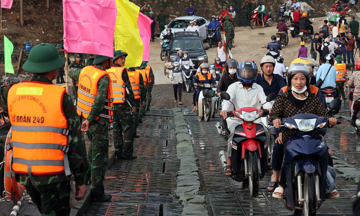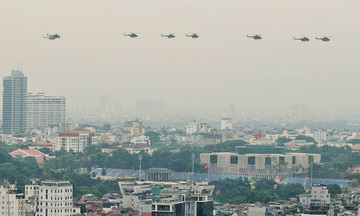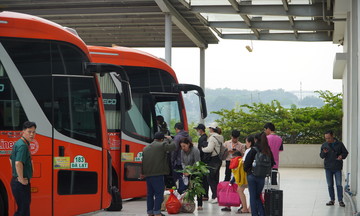On the morning of 1/7, dozens of people filled three rows of chairs at the Public Administrative Center within the Ba Diem Commune People's Committee office in Ho Chi Minh City, waiting for their turn. At the entrance, a specialist guided citizens to take numbered tickets according to their specific needs.
The 150 m2 office, recently renovated from the old communal headquarters, houses 12 counters handling various areas: land, household registration, agriculture and environment, economy, infrastructure and urban development, internal affairs, business registration, and social welfare. The new Ba Diem Commune was formed from the merger of Trung Chanh, Ba Diem, and Xuan Thoi Thuong communes, spanning 27.36 km2 with over 204,000 residents – the 4th largest population in the city.
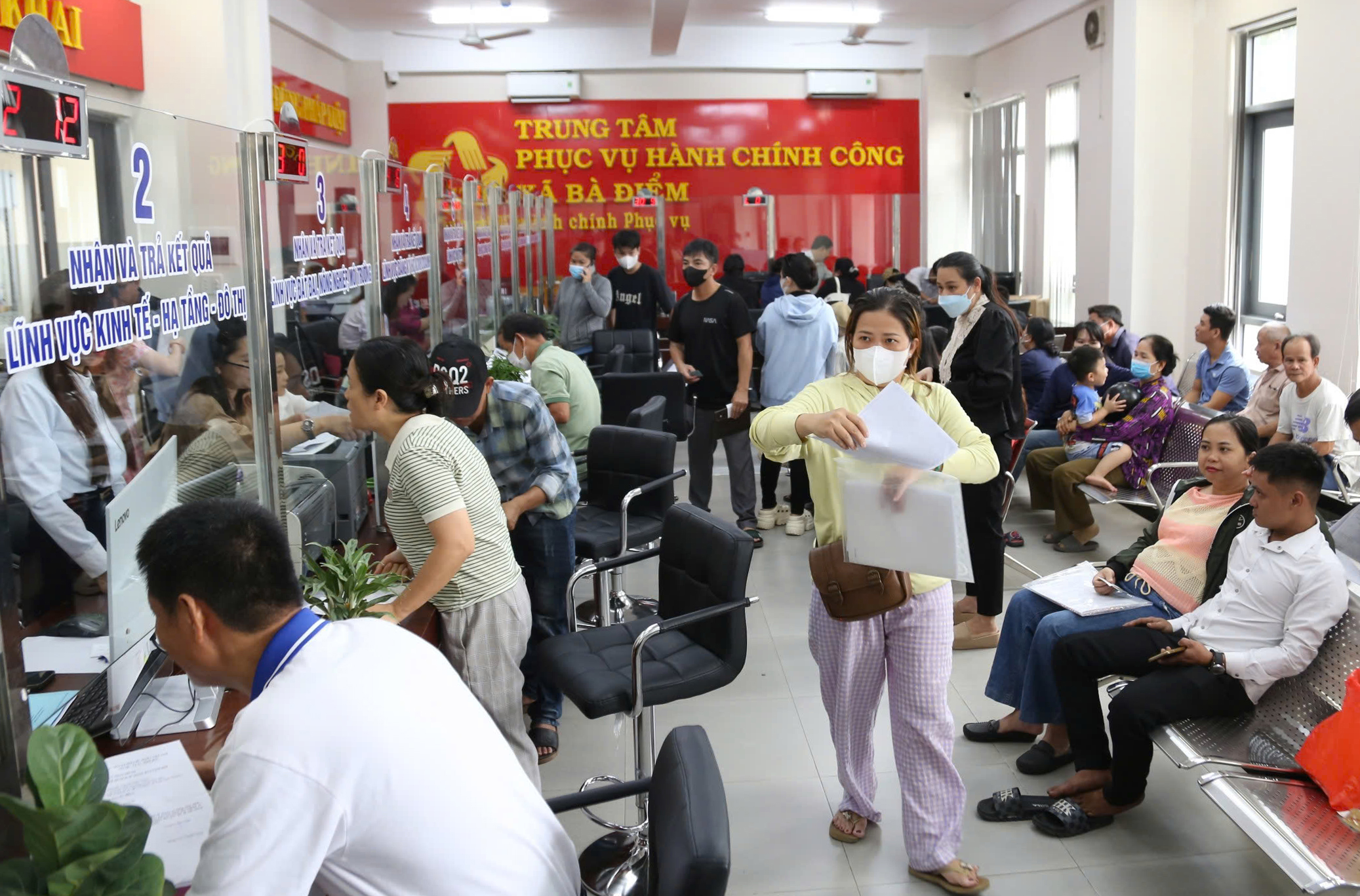 |
Numerous citizens at the Ba Diem Commune Public Administrative Center on the first day of the merger, implementing the two-tiered government model. Photo: Dinh Van |
Numerous citizens at the Ba Diem Commune Public Administrative Center on the first day of the merger, implementing the two-tiered government model. Photo: Dinh Van
Holding ticket number 3024, Thanh Thao (55) reported waiting over 20 minutes due to the high volume of people at the land counter. "Previously, I had to go to the district then to specialized departments, but now I can do everything at the commune level. However, the first day is very crowded, so the wait is a bit long," she said, suggesting additional counters for high-demand areas.
Nguyen Van Hau, Deputy Director of the Ba Diem Commune Administrative Center, said the first morning operating under the two-tiered government model saw a threefold increase in paperwork. To serve the citizens, the center deployed 16 officers and specialists, along with two managers and three non-specialist staff. The entire staff received training and participated in five trial runs beforehand.
However, on the first day, due to new procedures and increased volume, the staff encountered some challenges, resulting in longer processing times. Additionally, citizens were still confused about procedures under the commune's jurisdiction versus the district office's, particularly regarding land matters.
According to Hau, to enhance service quality, the commune will add three more counters for insurance and postal services and equip counters with tablets for citizens to provide direct feedback and evaluate service quality.
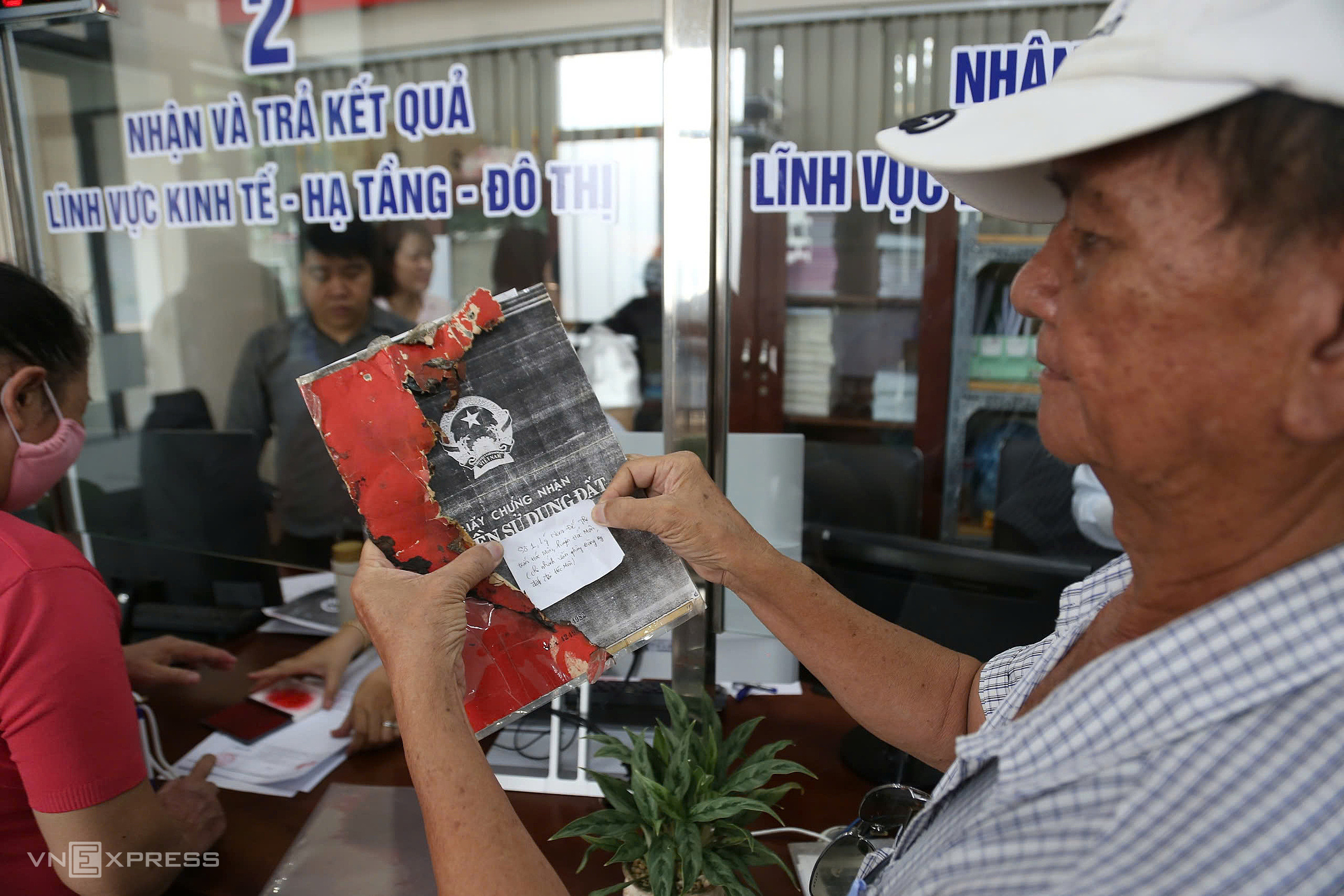 |
Pham Van Thanh (73) visited the Ba Diem Commune to exchange his land use right certificate and was given a referral to the land office. Photo: Dinh Van |
Pham Van Thanh (73) visited the Ba Diem Commune to exchange his land use right certificate and was given a referral to the land office. Photo: Dinh Van
Following the restructuring, from 1/7, commune-level administrative units nationwide decreased from over 10,000 to around 3,300, a reduction of about 67%. After merging Binh Duong and Ba Ria - Vung Tau, Ho Chi Minh City saw its commune and ward units reduced from 341 to 168, a decrease of over 50%. The new city spans 6,700 km2 with nearly 14 million residents, the largest in the country. This two-tiered governance model allows citizens to complete procedures at the local level instead of going to the district.
During a morning meeting with Di An ward – the most populous in Ho Chi Minh City with nearly 228,000 residents – City Chairman Nguyen Van Duoc commended the efforts in implementing the new model. He also advised communes and wards facing staffing or technological challenges to proactively propose solutions to ensure smooth operations and efficient public service.
Hanoi, one of 11 localities without provincial mergers, saw a significant increase in workload at the local level after eliminating the district level and restructuring from 526 to 126 commune-level units, now serving almost 9 million residents.
Over 140 officials and civil servants arrived early at the Dong Da Ward People's Committee office (Hoang Cau Street) this morning. Party Secretary and Chairman of the Ward People's Council, Nguyen Ngoc Viet, urged a shift in mindset, abandoning the "my ward – your ward" mentality and prioritizing public service. "The era of leisurely work is over. Now is the time for service-oriented administration, for creation," he said, concluding his address with an AI-generated poem encouraging innovation.
At the Public Service Center on the 1st floor, staff guided citizens, provided seating and legal documents, and student volunteers assisted the elderly with computers. Approximately 10 specialists received applications at the service counters.
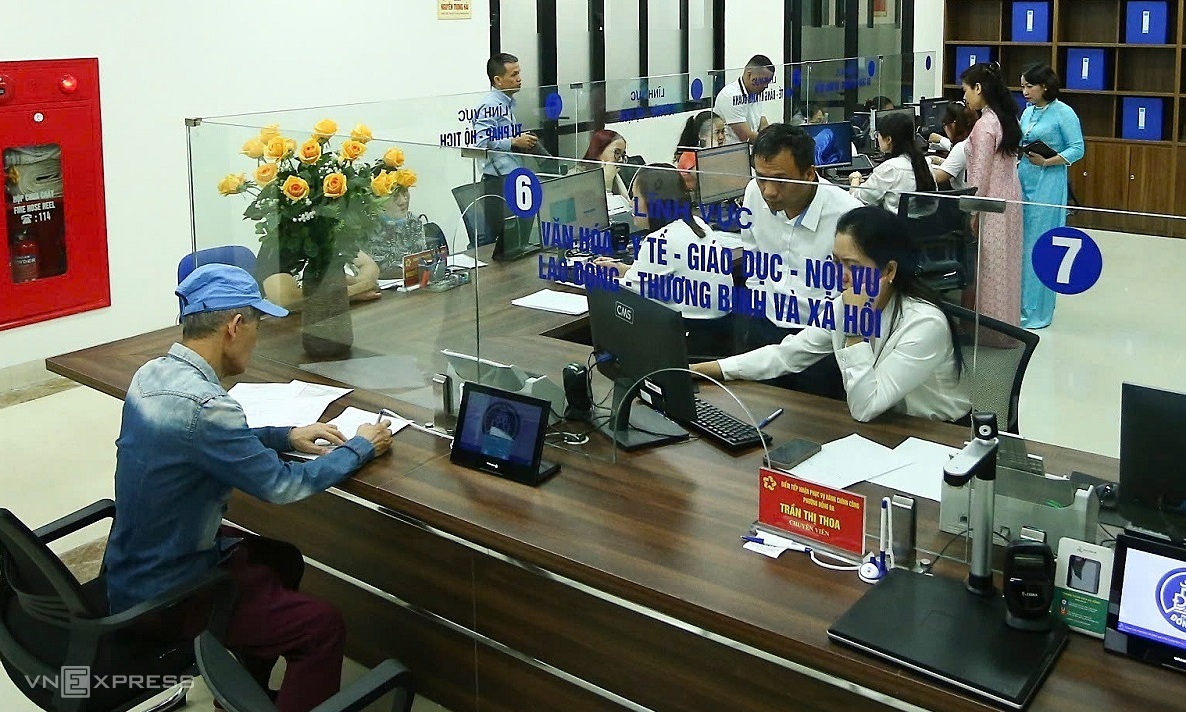 |
The Dong Da Ward Public Administrative Center on the first day of two-tiered governance. Photo: Viet An |
The Dong Da Ward Public Administrative Center on the first day of two-tiered governance. Photo: Viet An
Tran Thi Kim Thoa, a specialist at the center, said the workload increased 5 to 6 times after the merger. While everything is new, the staff are adapting. The number of visitors is also higher than before.
On the first morning, dozens of people came for land procedures, retirement paperwork, business registrations, and more. Nguyen Thi Thanh (Lang Ward) reported completing her business registration in just 30 minutes. "I was surprised by the smooth process and helpful staff on the first day," she said.
At Minh Chau Commune (formerly Ba Vi District), the only island commune located over 60 km from the capital's center, Nguyen Duc Tien, Party Secretary and Chairman of the Commune People's Council, reported that after the restructuring, the number of local officials and civil servants tripled to about 60. Many were transferred from other districts, 30–80 km away, but lack on-site housing.
Despite the challenges, all departments are fully staffed. Facing infrastructure limitations, commune officials are proactively finding solutions with a focus on practical work and tangible results, a spirit emphasized from the outset on the island commune.
After the restructuring, Da Nang now has 23 wards, 70 communes, and the Hoang Sa special district, covering over 11,800 km2 with a population of about 3 million. Formed from five wards with a population now ten times larger at over 130,000, the Hai Chau Ward Public Administrative Center at 15 Le Hong Phong Street experienced a significant increase in visitors on its first morning.
To meet the demand, the center doubled its administrative service counters from 7 to 14 and added two help desks for guidance and online support. Some ward and former district officials are now working side-by-side for efficient processing.
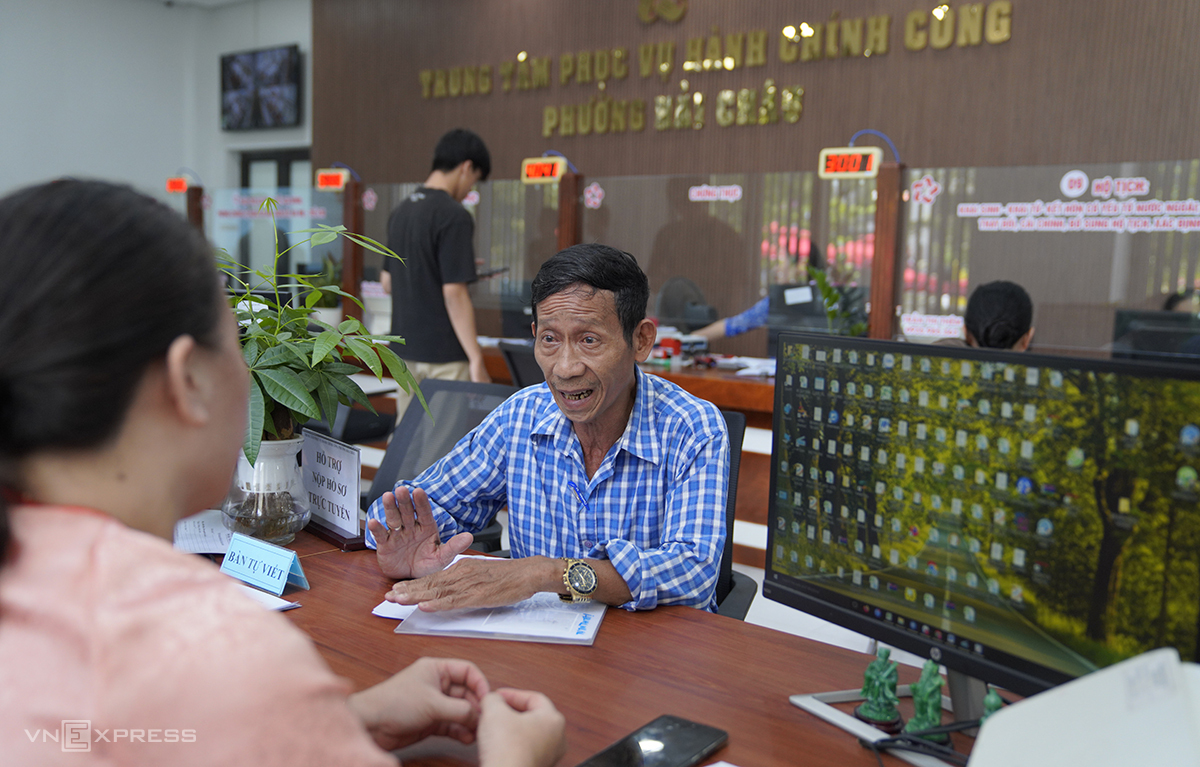 |
Dinh Duc Duy receives assistance from a specialist at the Hai Chau Ward Public Administrative Center. Photo: Nguyen Dong |
Dinh Duc Duy receives assistance from a specialist at the Hai Chau Ward Public Administrative Center. Photo: Nguyen Dong
Hai Chau Ward Chairman Nguyen Van Duy stated that the ward proactively allocated staff and equipment to ensure timely service, preventing bottlenecks despite a higher-than-expected influx of citizens.
"We had to add more waiting chairs and implement a backup plan to ensure seating and assist with ticket distribution," he said, noting the smooth processing on the first morning. Citizens primarily sought services related to certification, death certificates, and legal affairs, as well as construction permits and land documents.
Managing over 160,000 residents, Tran Xuan Tay, Chairman of Nha Trang Ward in Khanh Hoa, reported deploying 15 service counters staffed by 15 officials, in addition to specialist teams from various departments. Prior to the launch, the ward meticulously planned and used the weekend to prepare facilities.
According to Tay, despite the large crowds, officials addressed all citizen concerns promptly. Software overload issues were also handled swiftly. Despite the pressure, staff remained helpful, diligently processing backlogged paperwork alongside new requests.
Reporter team





